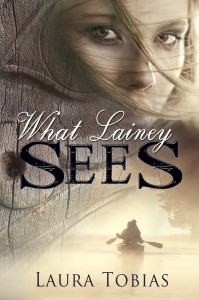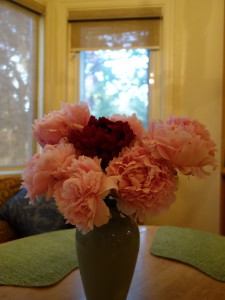 In April I wrote about how I self-published What Lainey Sees, a paranormal romance novel I’d had in the works for years.
In April I wrote about how I self-published What Lainey Sees, a paranormal romance novel I’d had in the works for years.
It’s been an interesting six months. The indie book birth reminds me of childbirth, only my breasts aren’t leaking milk and I’m getting more sleep (most nights). When I was pregnant with my daughter, I was as prepared as most first-time mothers are: I’d read the books, taken the classes, listened to the advice of those who’d given birth before me. I’d made decisions on everything that mattered (and many things that didn’t).
I had a plan. I knew what to expect (You can stop laughing now).
Because then the contractions started and the plan I’d written and the decisions I’d made were blown out of the water by the reality of having a new person in our lives. A new person with her own needs, her own personality, and her own agenda.
However, What Lainey Sees was a book. There was no life I might ruin if I started solid food too early or used the wrong diapers or – God forbid – didn’t get her into the right preschool. Compared to childbirth and parenting, this was a breeze. This was in my control. And I had a plan.
You’d think I’d learn.
I did, finally. And this is what I’ve learned in the first six months of indie-publishing.
Nothing ever goes according to plan – book birth or childbirth – and that’s okay. Being flexible and going with the flow is a very good thing.
Everybody has an opinion. Some people are opinion bullies. You can spot them by the phrase they use: I would never. As in: ‘I would never supplement with a bottle.’ And ‘I would never give my book away for free.’ Curiously, some of these opinion bullies don’t have babies – book or otherwise. They opine hypothetically. Unsaid but implied by opinion bullies is that what you’re doing is, at best, wrong or, at worst, ruining your child’s psyche or the entire publishing industry.
You will change your mind. The things you thought were sacrosanct (staying home with your child; not worrying about reviews for your book) will be challenged. I didn’t know that working would make me a better mother. That those reviews self-pubbing authors are always clamoring for aren’t ego cookies, but are critically important when it comes time to buy advertising or to keep your book visible.
Most of it isn’t life and death. Those opinion bullies would have you believe that every choice you make will make or break your child or your career. That failure to teach your child a second language will leave them with the mental skills of an amoeba. That launching your ebook on a singular platform (or multiple platforms, or pricing it too low or having a puce cover) will ruin your career forever (Note: I don’t recommend a puce cover and I do recommend a second language but it’s still not life and death).
Finally, remember the end goal. In those euphoric and exhausting days following any birth it’s easy to get caught up in minutiae and forget what really matters. At the end of the day, we all want the same thing: healthy, happy children and well-written, entertaining books. Children and books we can send out into the world with love and a prayer that they’ll find their place and be embraced whether that’s in the board room or the book store.
If you missed April’s blog and are curious about why I chose the indie route, go here: http://lauralangston.com/2015/03/26/and-now-for-something-completely-different/
 Here’s an interesting bit of trivia. On this date back in 1690, the first piece of paper money was issued by the Massachusetts Bay Colony in the United States.
Here’s an interesting bit of trivia. On this date back in 1690, the first piece of paper money was issued by the Massachusetts Bay Colony in the United States.




Comments